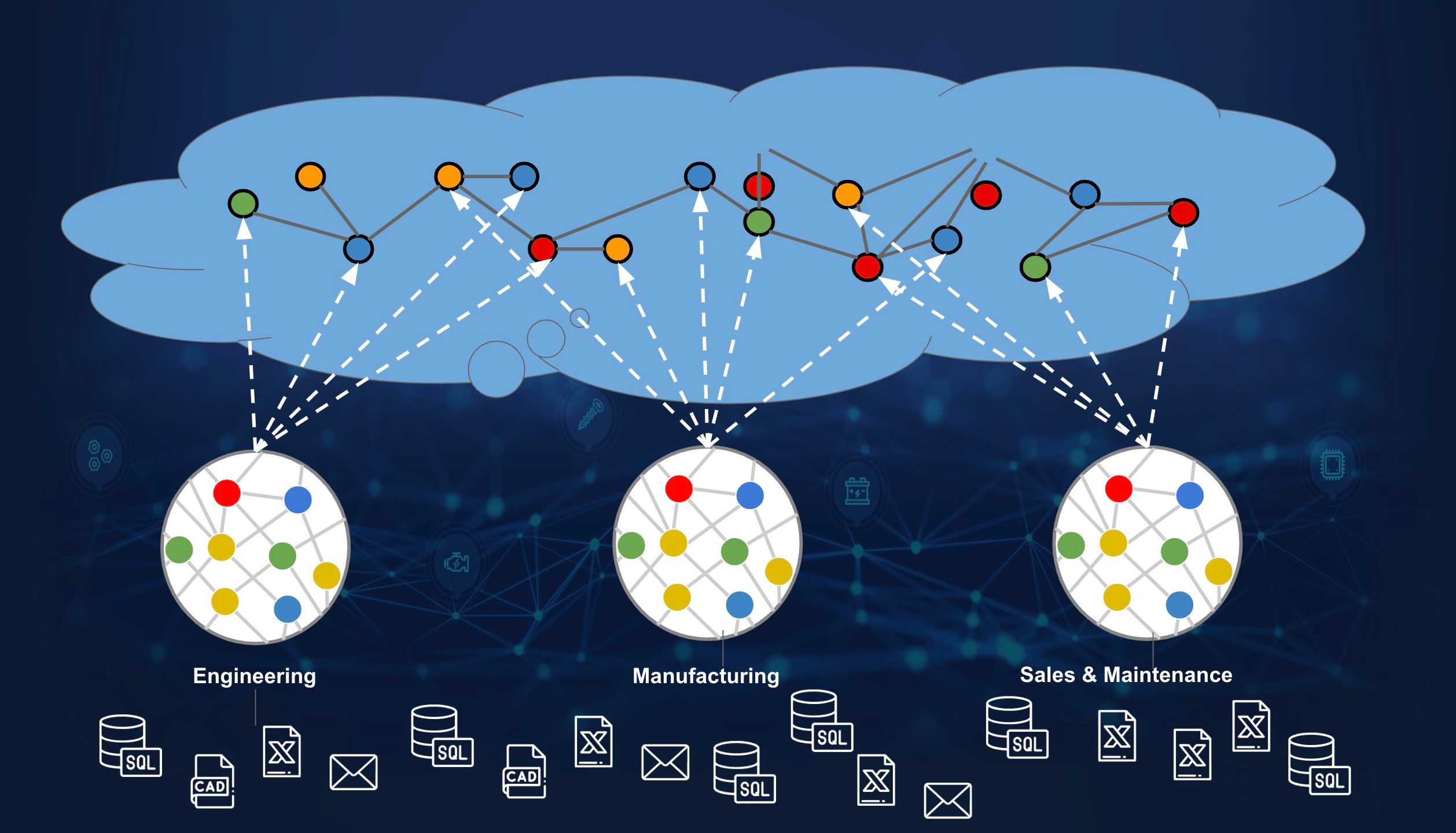
Earlier this week, I attended the PI DX 2023 conference in Atlanta. You can check my agenda walkthrough here. In my article today, I want to share key points of my presentation and share a slide deck. It was no video recording available, so I will share the points of my presentation and a slide deck.
Manufacturing in the modern age is faced with a host of challenges. The necessity for better, faster, and cheaper production demands continuous optimization of processes, and the post-COVID digital transformation adds a layer of complexity with the need for remote, automated systems. Furthermore, manufacturers have to adapt to ongoing supply chain disruptions that cause delays and increase costs, requiring more robust and diversified supply chain strategies.
At the same time, the sector must grapple with the complexity and risks of varying regulations across industries and locations, demanding comprehensive knowledge and adherence to avoid potential pitfalls. The drive towards sustainability compels manufacturers to adopt greener methods, which can be intricate and costly. Manufacturing companies are moving towards new business models, which required the organization of adaptive digital production processes.
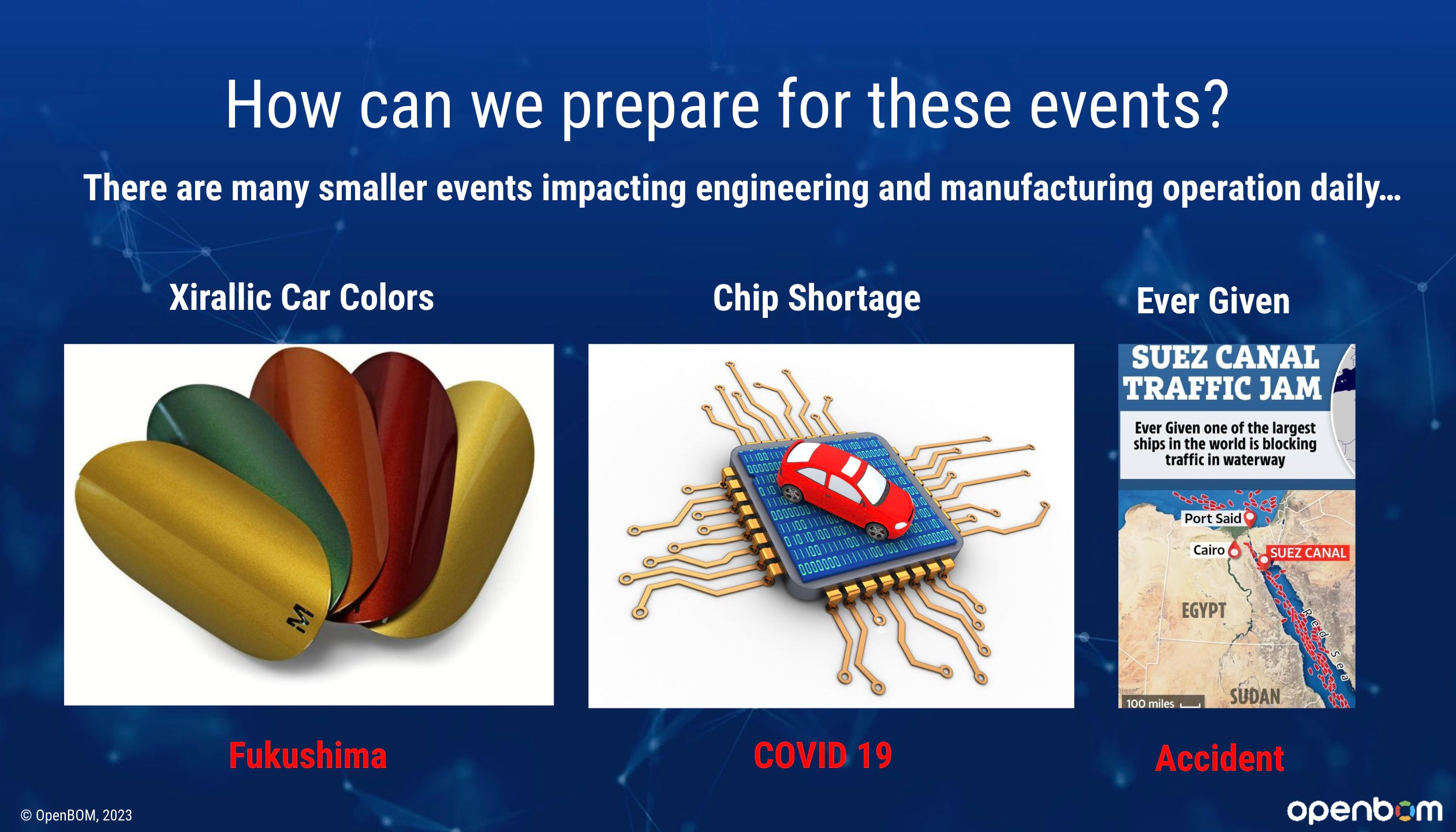
How to overcome challenges and avoid problems? The answer to this question lies in the more efficient use of data. One of the key elements of this process is to help industrial organizations in transitioning from siloed applications to intelligent data-oriented platforms. The new approach of focusing on data (instead of application) will allow to industrial companies to unleash the power of product data in the manufacturing sector. We need to facilitate the shift from discrete software applications in engineering and manufacturing to a cohesive ecosystem powered by data.
Data Complexity and Future Informational Revolution
The problem of data complexity is real. You can see this problem in small companies and large industrial enterprises. The key element of it is related to data complexity in a distributed environment where companies are operating with data located in multiple applications and data sources.
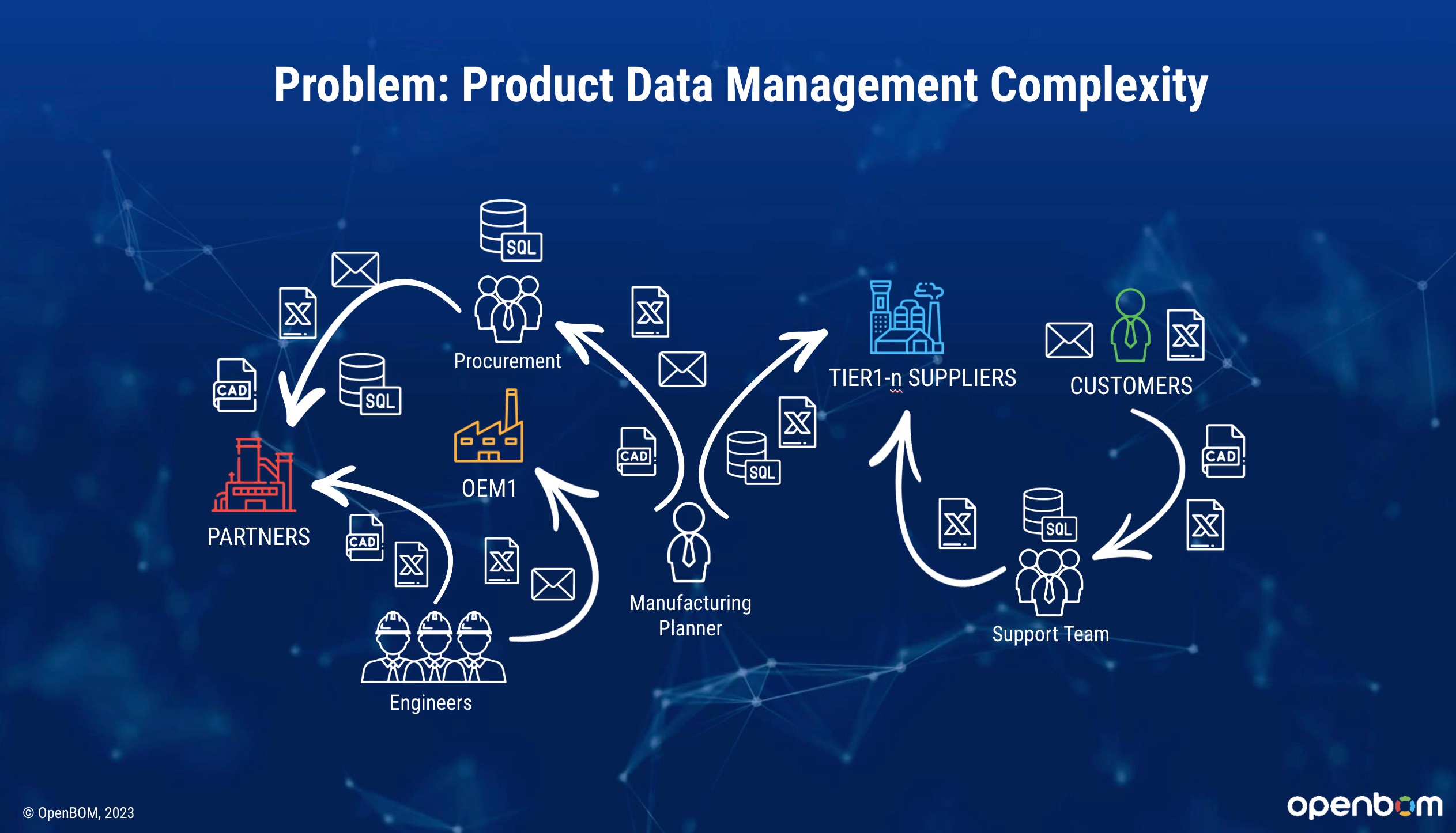
Therefore, the next industrial revolution will be informational. We are collecting so much data these days that companies will have to turn data into first-class citizens in their future operational model.

Problems with existing PLM software
Traditional Product Lifecycle Management (PLM) systems are characterized by their heavy reliance on relational databases and tons of legacy data sources (Excel and legacy applications). Think about the reliance on internal IDs and a crazy number of joins to combine multiple data sources. The issue with this approach is its complexity, rigidity, and high maintenance cost. This data structure can create disconnected silos, making it difficult to track and manage product data across different stages of the lifecycle. Furthermore, these systems can be challenging to scale and adapt to changing business needs, and they often lack the intelligence to provide meaningful insights from the vast amount of data they contain.
Today, the disconnect between future vision of digital PLM and a reality in the field is huge.
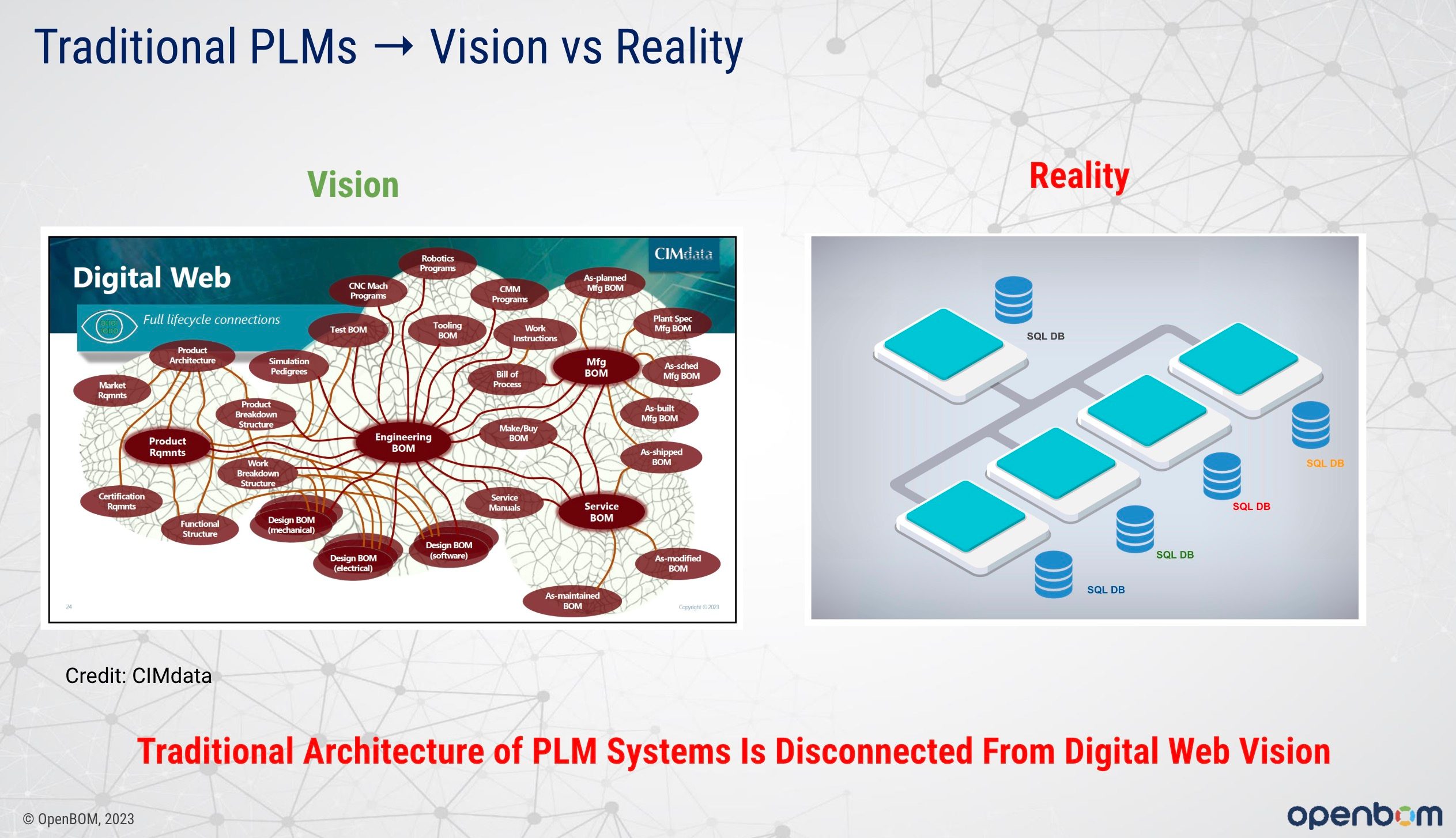
Here is my summary of existing PLM problems:
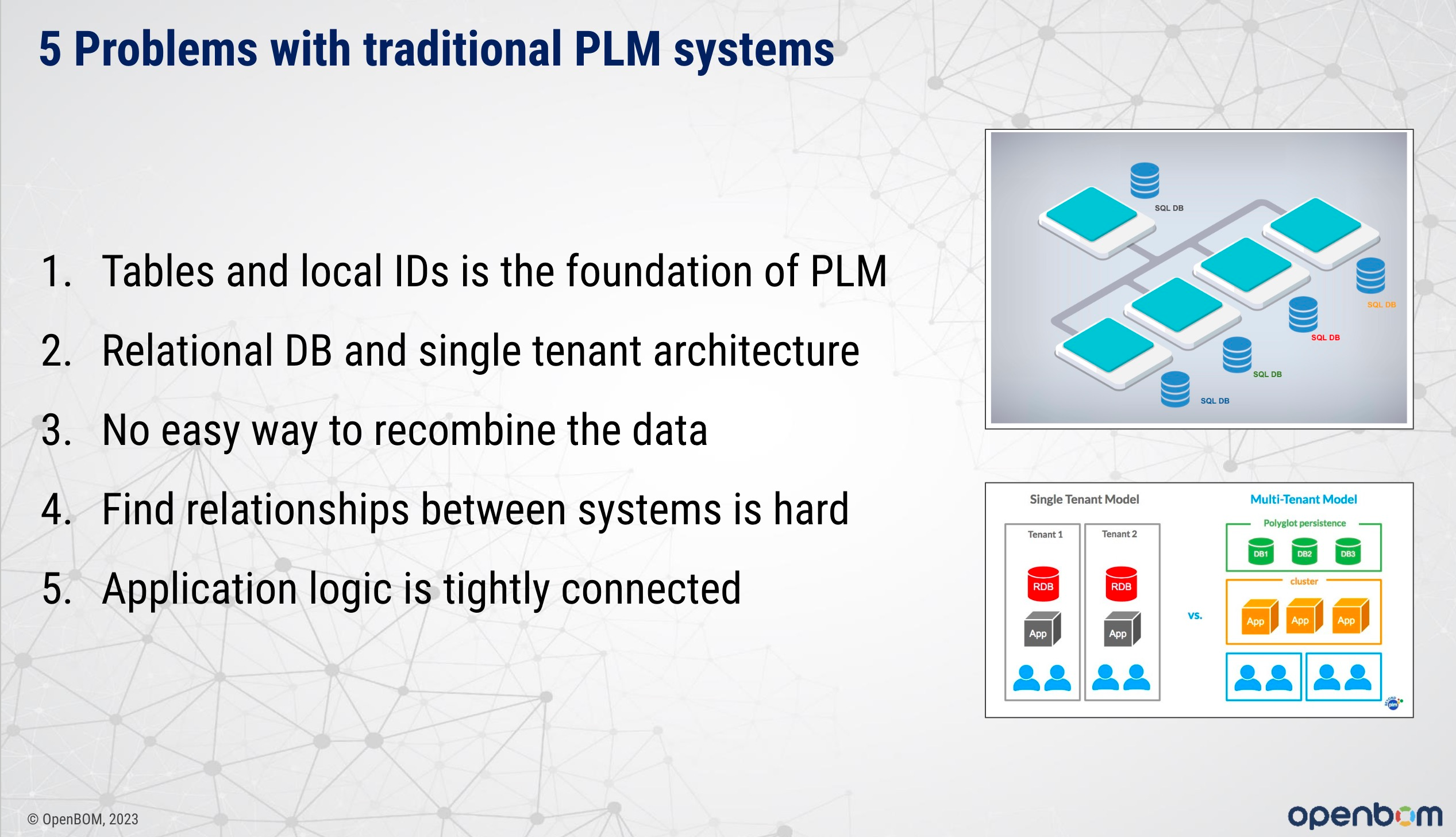
Solution – Graphs and Networks
Semantic technologies and graphs are the foundation of the future data model for PLM. For the last 20 years, these technologies matured and been used by many organizations and industries in both B2C and B2B spaces.
Graph models and Knowledge graphs bring a combination of flexibility and semantic metadata to support the complexity of modern product design, engineering and manufacturing.
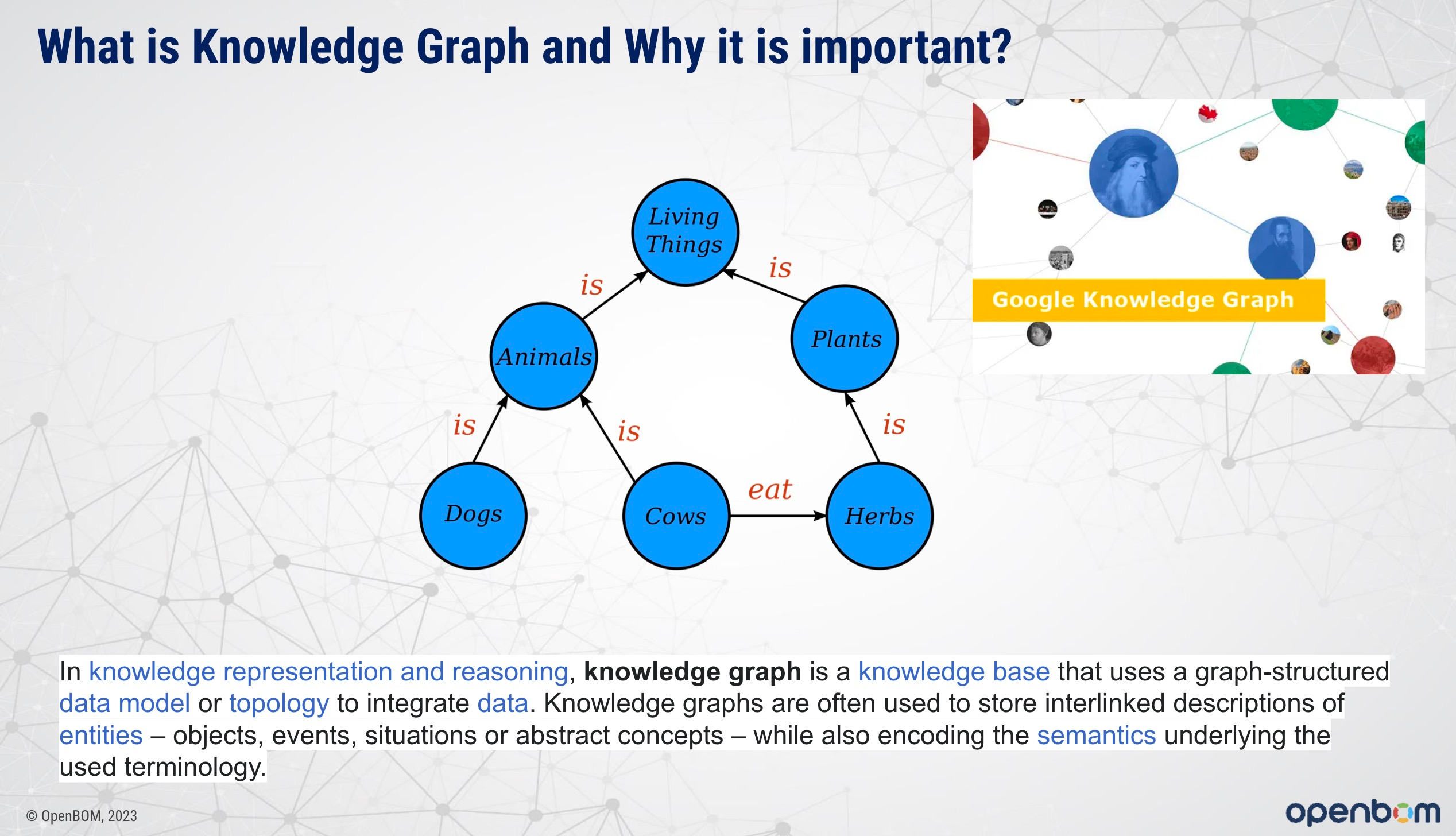
At the same time, networks (and multi-tenant data models) provide a way to solve the problem of communication and data integration between multiple companies.
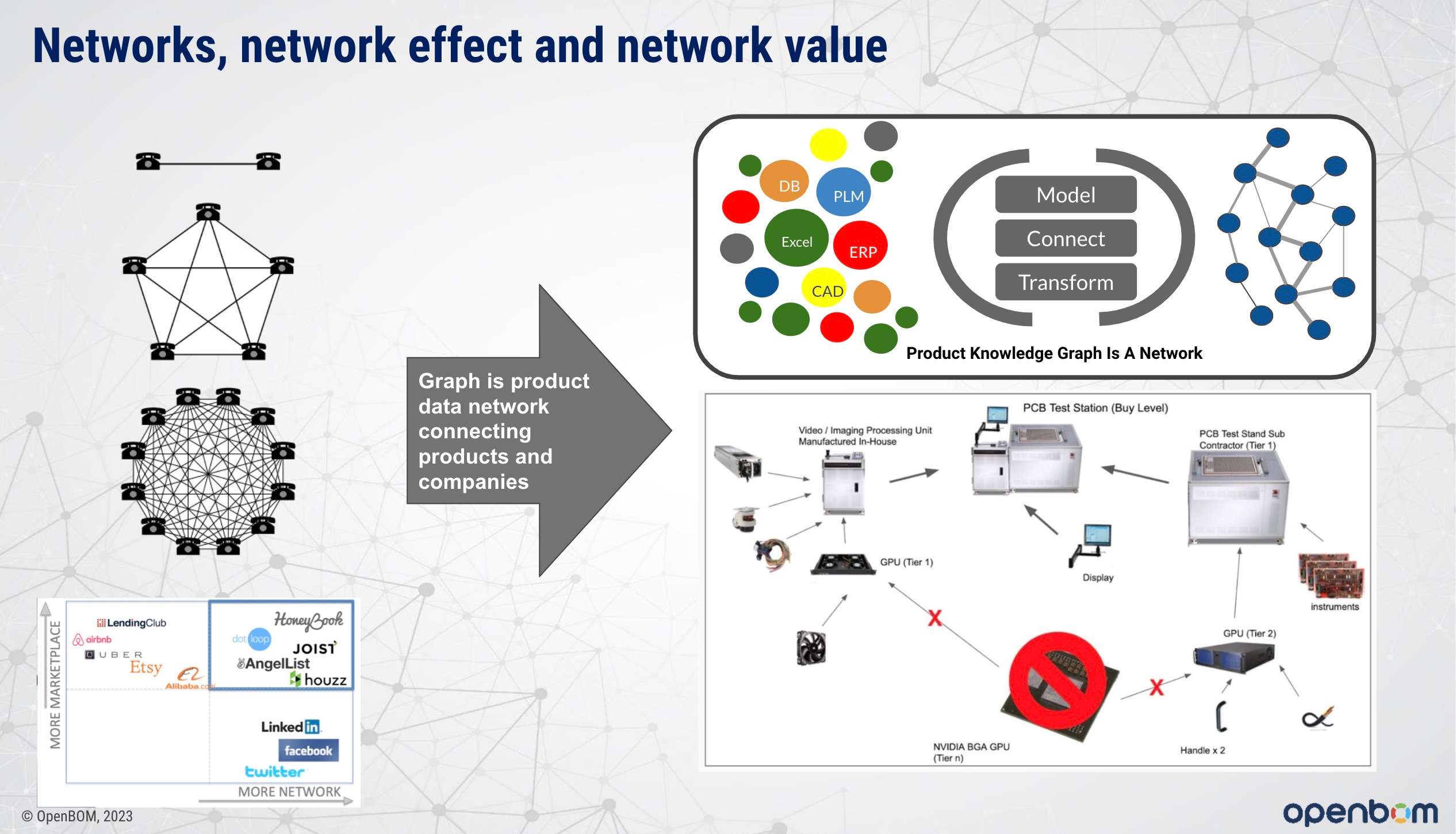
The overall model of knowledge graphs across multiple data silos can provide a mechanism to organize data and processes. According to Gartner’s prediction – by 2025, graph technologies will be used in 80% of data and analytics innovations, up from 10% in 2021, facilitating rapid decision-making across the organization
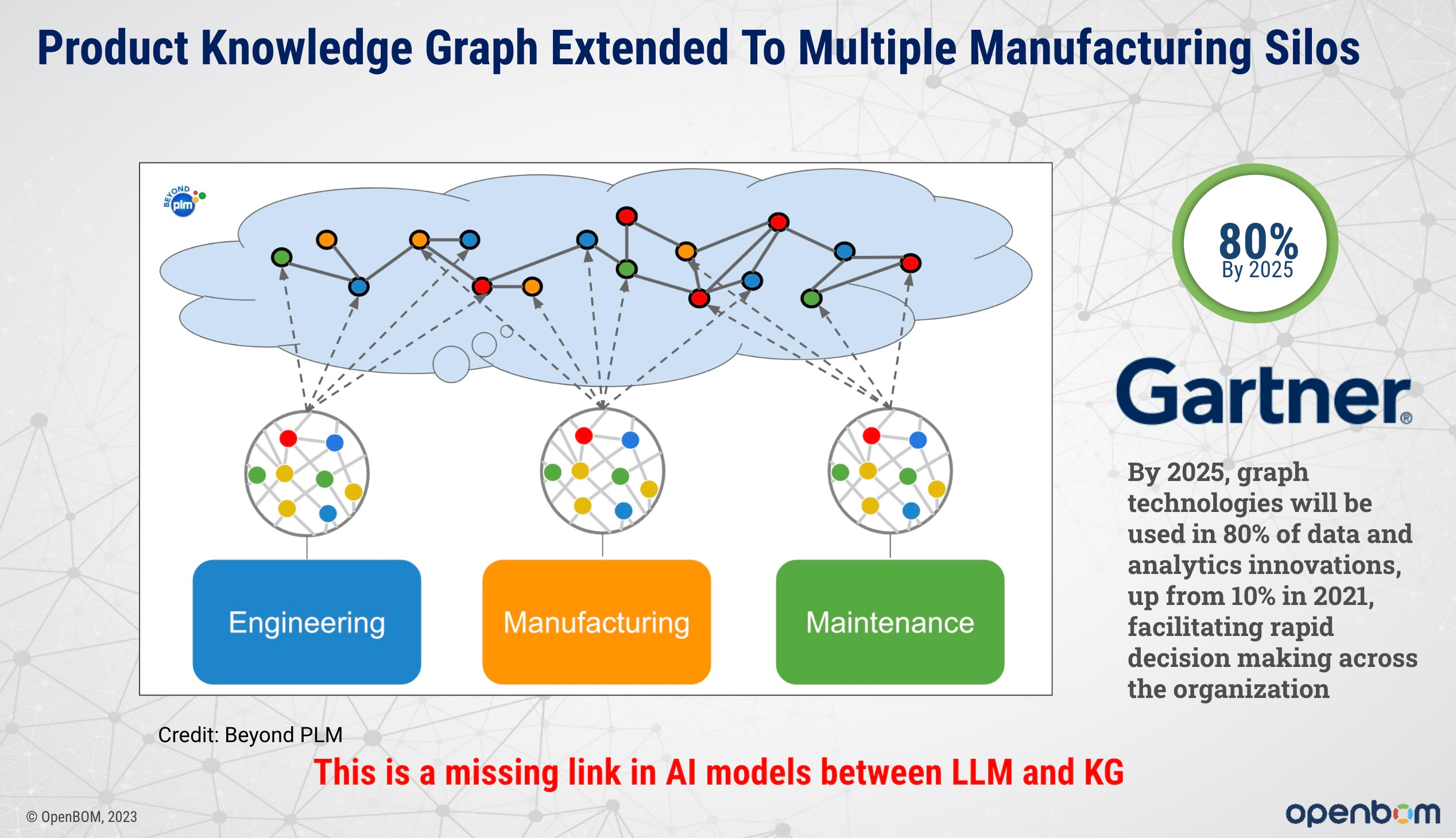
Also, a combination of Knowledge graphs and LLM models provides a really interesting solution for the future AI in PLM.
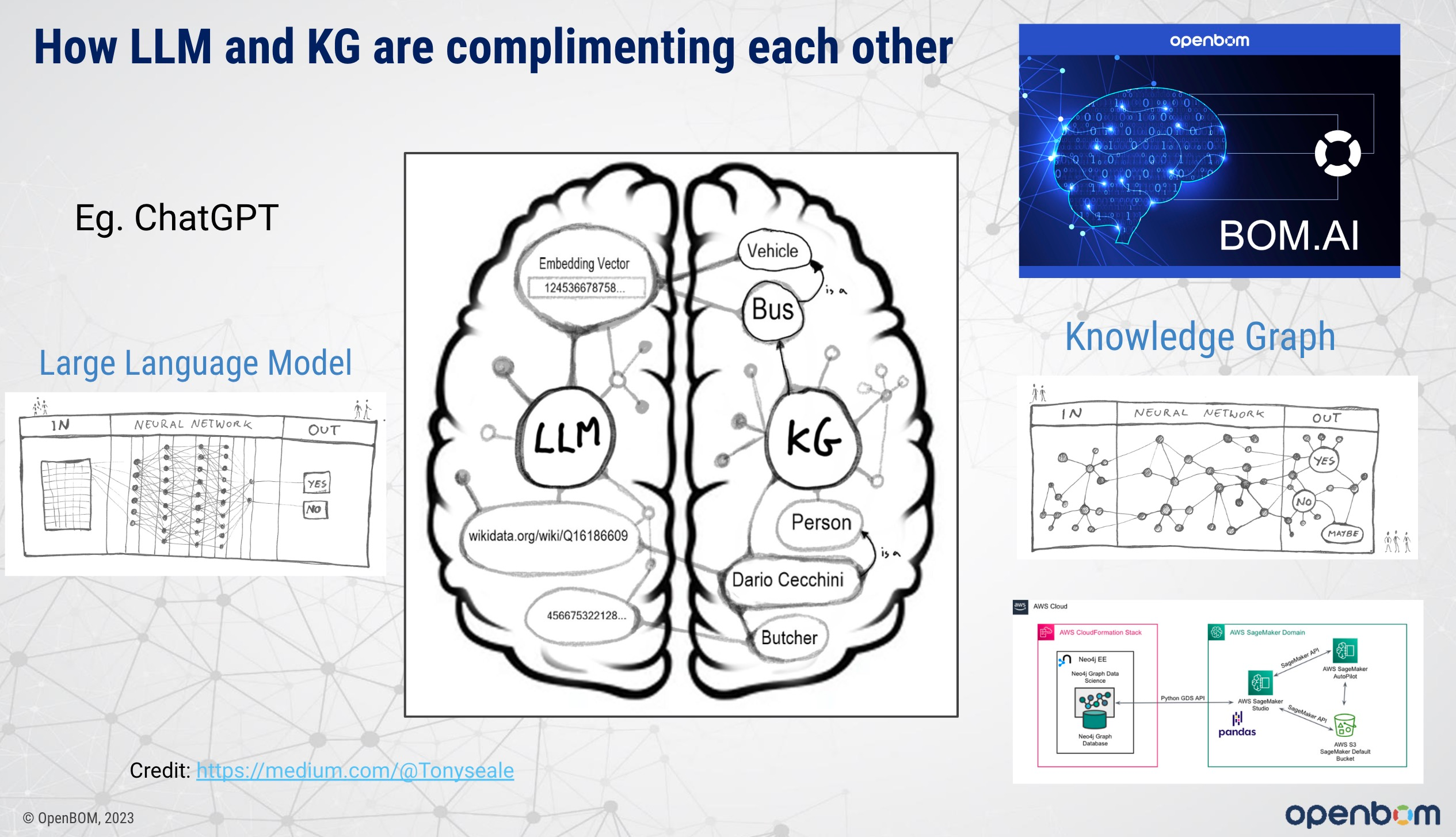
SOR, SOE, SOD
What does it mean for existing systems – PLM, ERP, MES, and others? In my view, industrial companies made substantial investments in existing PLM solutions, so I don’t expect enterprises to fast switch from existing solutions. Instead, I can see how these companies will continue to use these systems as systems of records (SOR). On top of them, we are going to see a new type of solution – systems of engagement (SOE) and system of decisions (SOD) to support modern connected processes and provide analytics and decision support.
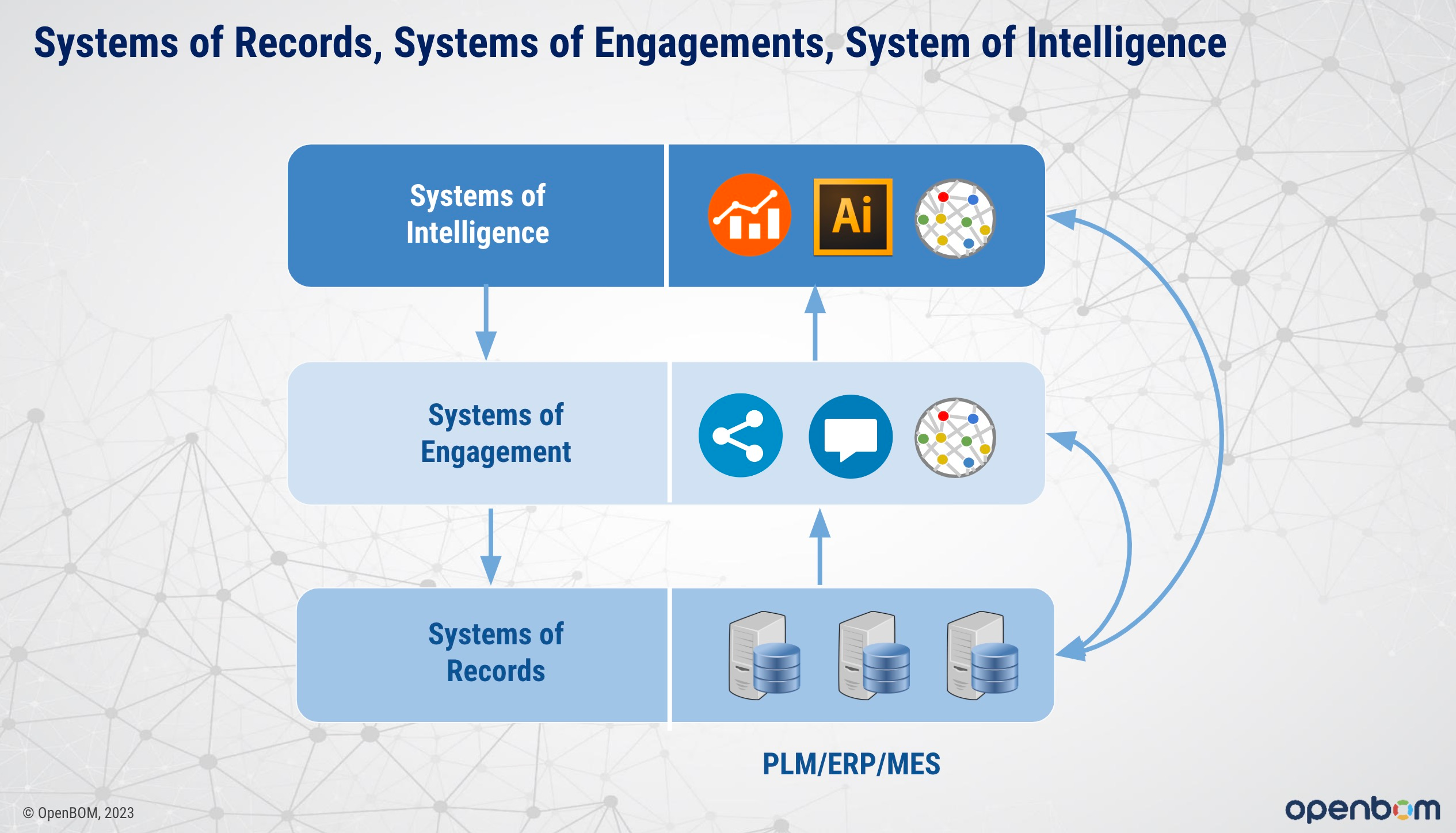
Slide deck To Harness The Potential Of Product Data
Check my slide deck from the event. I provided more detailed examples and also share my experience from building OpenBOM using modern semantic technologies, a graph database, and multi-tenant data management organizations.
PI DX is always a good experience – great organization combined with an amazing audience and excellent questions.

Conclusion
Industrial companies look at how to build new products better, cheaper, and faster. Therefore, their motivation is clear – to find technologies and solutions to solve the problem of data complexity, glean intelligence from existing data, streamline processes, and provide decision support to outcompete others and mitigate compliance and supply chain risks.
A new type of technologies and products will be emerging in the next few years to complement existing PLM SOR (system of records) with new technological capabilities to manage data, and processes and to support intelligent decisions. Graph models, graph databases, and network models have a good potential to become a foundation of these new systems of engagement and decision support. Just my thoughts…
Best, Oleg
Disclaimer: I’m co-founder and CEO of OpenBOM developing a digital cloud-native PDM & PLM platform that manages product data and connects manufacturers, construction companies, and their supply chain networks. My opinion can be unintentionally biased.











